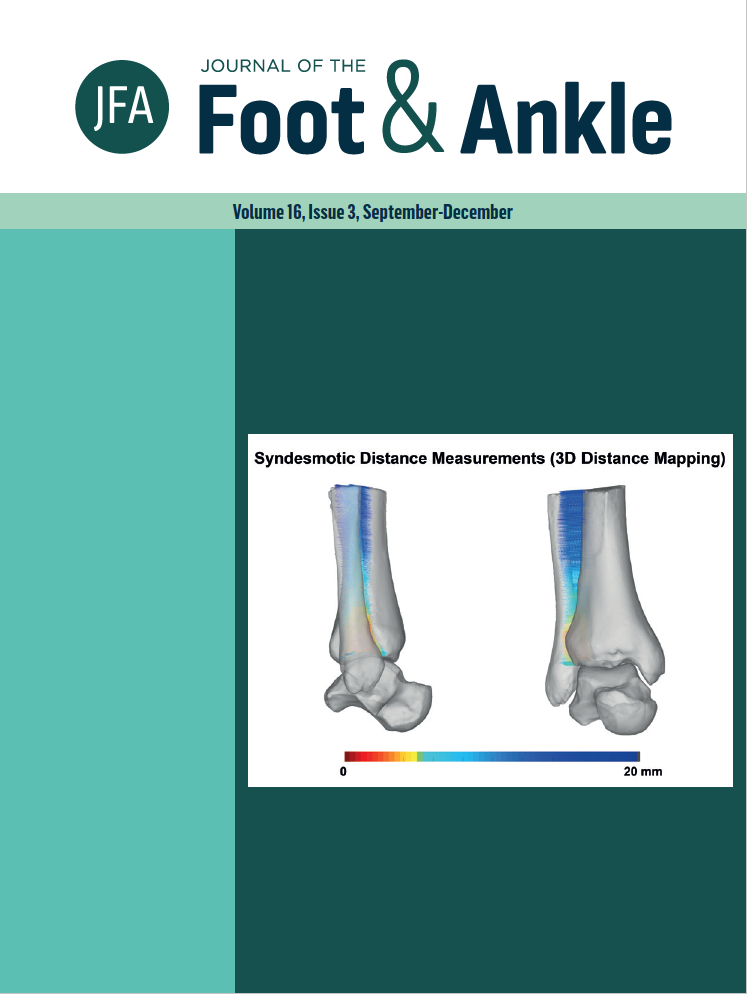Foot and ankle offset in the setting of severe rotational foot and ankle deformities
DOI:
https://doi.org/10.30795/jfootankle.2022.v16.1677Keywords:
Ankle joint, Foot deformities, Tomography, x-ray computed, Weight-bearingAbstract
Objective: The goal of this paper was to evaluate the validity of foot and ankle offset (FAO) measurements in the setting of severe foot and ankle deformities. Methods: This study included 57 feet (36 patients) that had a history of severe cavovarus deformity. Each participant received a weight-bearing computed tomography (WBCT) scan that was then used to measure FAO. This measurement was performed once using the traditional measurement technique and two additional times using a modified technique that allows for rotational correction of the images to align the talus. Results: Traditional FAO (TFAO) and modified FAO (MFAO) were found to have a significant correlation with one another (r (54)=0.92, p<0.001). There was a high positive correlation between the variables of the two techniques (r=0.92) with the intraobserver reliabilities (ICC=0.95) for FAO measurements. The agreement between TFAO and Modified foot and ankle offset (MFAO) measurements was also considered excellent (ICC=0.99). Conclusion: The MFAO method provides statistically similar FAO measurements compared to the TFAO method in this population. Thus, the TFAO method could potentially expand its patient population to provide surgeons with a reliable tool for assessing more severe deformities. Level of Evidence IV; Retrospective Study.
Downloads
Published
How to Cite
Issue
Section
License
Copyright (c) 2022 Journal of the Foot & Ankle

This work is licensed under a Creative Commons Attribution-NonCommercial 4.0 International License.







